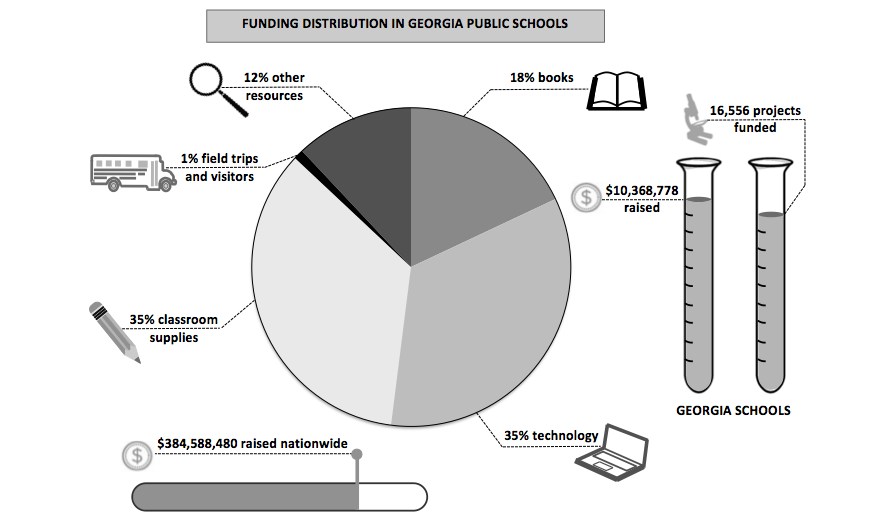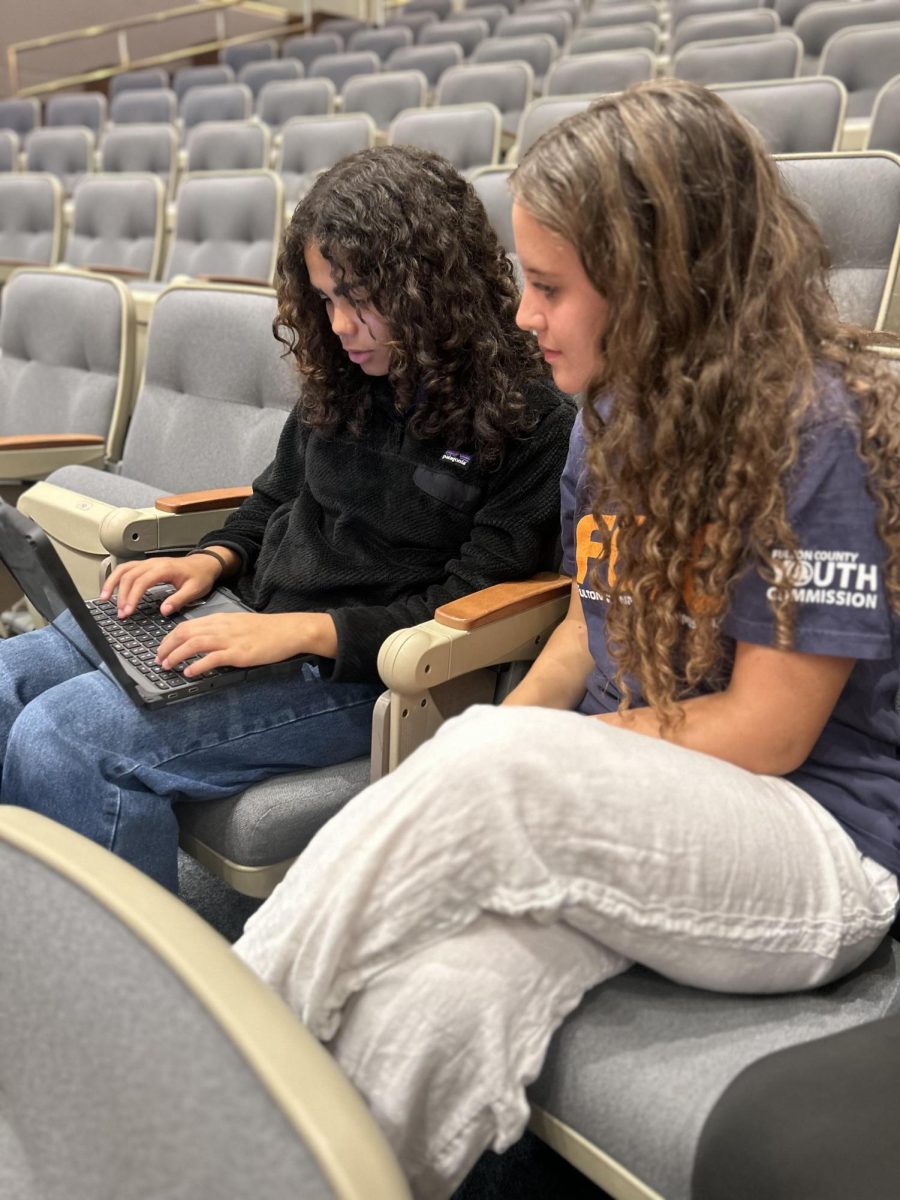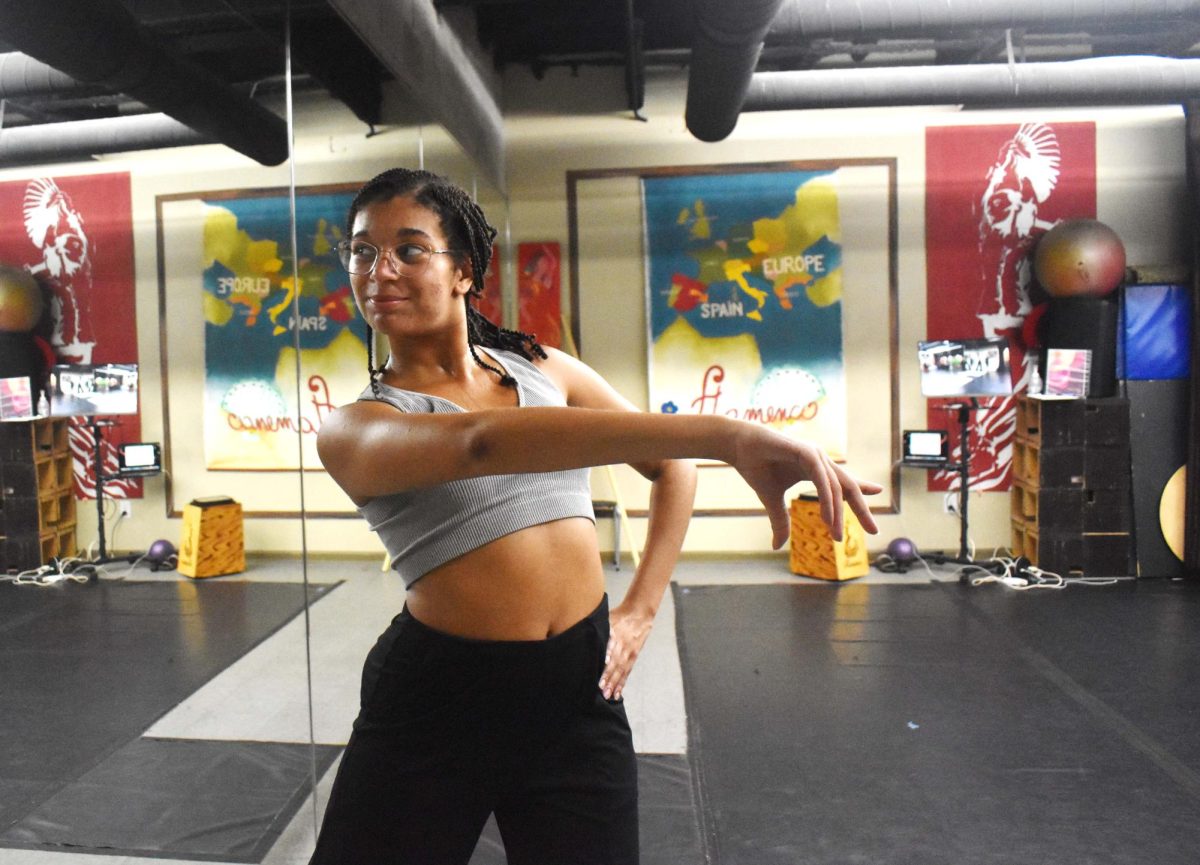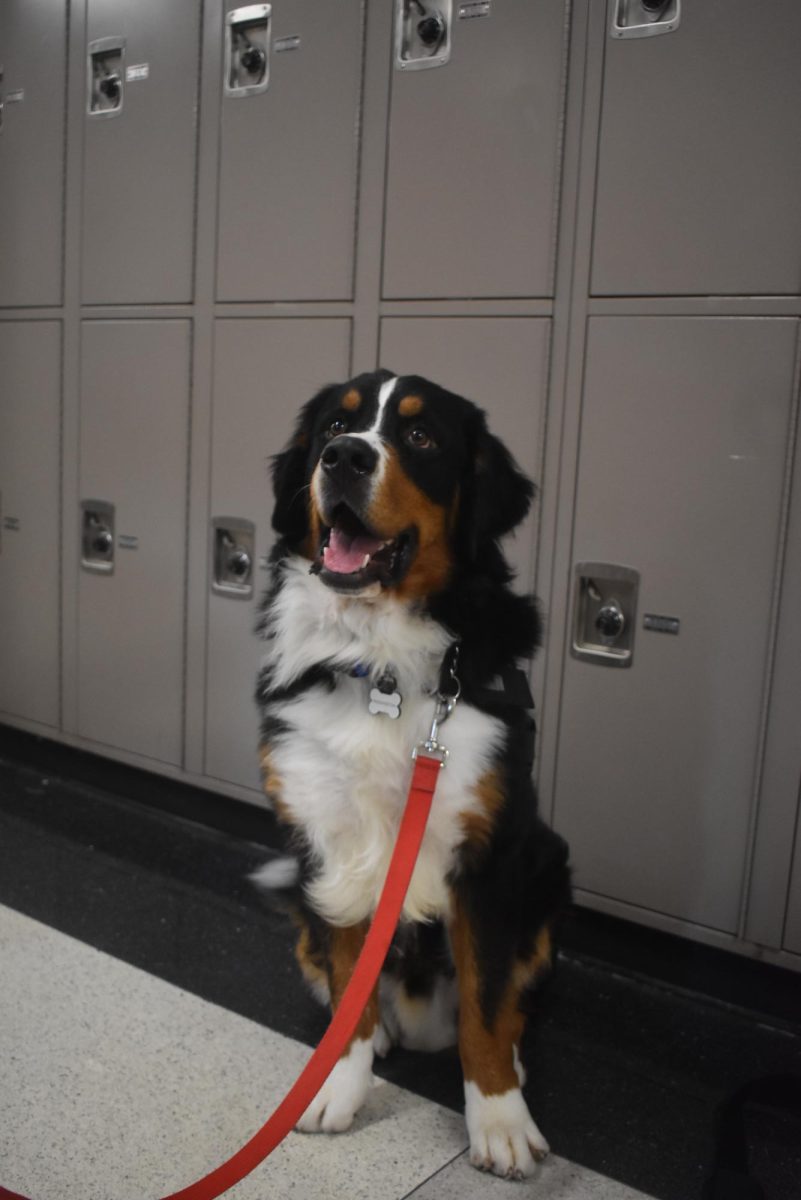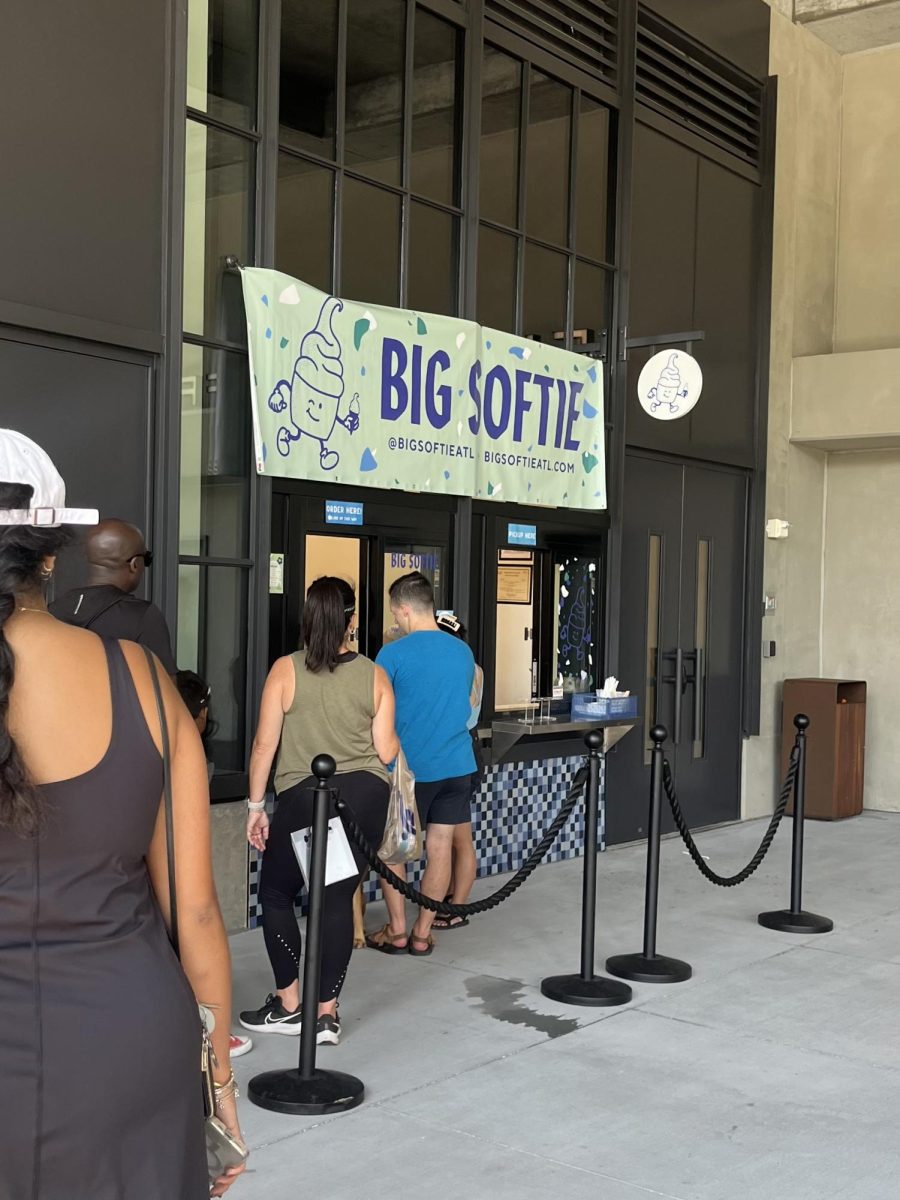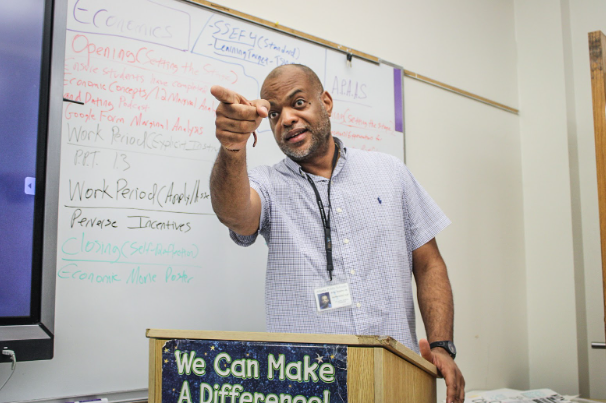By Allie Schneider
In an ideal world, every student has the potential to one day cure cancer, end world hunger, or bring about world peace. The stark reality of the situation, however, as many public school teachers know all too well, is that a lack of resources and adequate funding for public school classrooms can often cause students to fall short of their potential.
In 2000, the online charity organization Donors Choose launched to help public school teachers obtain funding for projects and classroom materials directly through individual and corporate donations. Since its creation, the site has raised over $350 million for over 16.5 million students nationwide.
Within the past few years, several Grady science teachers have posted projects on the website, including Luke Esposito, Nikolai Curtis, and Ben Sellers.
“When you are a teacher who’s always looking to innovate and try out new ideas, [Donors Choose] is a great mechanism to do that,” said Esposito, Grady honors and AP physics teacher. Esposito has raised over $5,000 on the site, most of which has gone to purchasing new LabQuest equipment for his science classroom.
“The technology was amazing because it helped us really observe [experiments] more clearly and quickly than before,” junior Ely Peteet said. “I thought it was a very fascinating experience.”
According to Esposito, the technology Donors Choose funded gives students a chance to try out labs they wouldn’t have been able to attempt in the past.
“I went to a public school myself, so I know the benefits of having the materials and resources you need in order to learn,” said Rakey Drammeh, assistant to the CEO at Donors Choose. “If you don’t [have those resources], you fall into this gap where people who do have money are able to send their kids to the best schools and offer them the best resources. Those who are stuck in the middle remain stuck, and don’t get the opportunity to propel their career forward.”
Charles Best was a social studies teacher at Wings Academy in New York City when he first started Donors Choose in his classroom. He initially invited colleagues and staff to post projects and he anonymously funded the first 10 projects to demonstrate the site’s efficiency.
Although site is open to all public and public charter schools in the United States, it especially targets high-poverty school systems and high-needs schools in an attempt to lessen the gap between the education of high and low income bracket students.
According to the National Center for Education Statistics, a high-poverty school is one in which at least 76 percent of students are eligible for free or reduced-price meals. The No Child Left Behind Act established a high-needs school as one ranked in the top quartile of schools with the most unfilled teacher positions or having a high percentage of out-of-field-teachers, teacher turnover rate, or percentage of teachers who are not certified.
Donors Choose has set a goal to have a project funded at each high-needs school in America within five years. The organization has already funded a project at 70 percent of high-poverty schools in the United States, and out of the fully funded projects, 81 percent were from high-poverty schools.
“It sounds so cliché, but children are our future,” Drammeh said. “If we don’t give them the right sources they need to be successful, then we can’t move forward in society.”
When teachers post requests on the website, private philanthropists and large corporations alike are given the chance to donate directly to the project. Once a project is funded, Donors Choose purchases the materials and sends them to the school. All donations are tax-deductible, and donors are able to see where every penny goes and exactly the impact that their donation has on public school students.
“We care deeply about our donors and [we] make sure they have a good experience on our site,” Drammeh said.
After a project receives funding and students use the new materials, teachers send donors a letter explaining how the money has benefited their classroom. Donors can opt to be sent photographs of the students using the resources and even hand-written thank you notes.
Although not every project gets fully funded on Donors Choose, Esposito says that he has been lucky—all of his projects have been thus far.
“I’ve had some get really close to the deadline but someone always swoops in and takes care of it at the last minute,” Esposito said.
At the beginning of this year, Staples funded all the Donors Choose projects listed under Atlanta Public Schools, which included a few of Esposito’s projects. Chevron, as well as a few other large corporations, have also given grants to Grady in the past. “It’s not to say that APS doesn’t support us,” Esposito said. “They do, but there’s a lot of uncertainty if you want to get supplies for your school. Sometimes it happens very quickly and sometimes it doesn’t happen [for] several months … Sometimes it doesn’t happen at all.”
APS only has limited funding for each department, so when that funding runs out, teachers aren’t able to carry out new ideas and projects. For many Grady teachers, Donors Choose provides materials quickly and efficiently without the complications posed by district funding requests.
In September of 2015, the organization expanded its model to include student-run projects. Although teachers are still involved in communication with Donors Choose for these projects, it is up to the students to generate ideas and request materials.
“This gives [students] the opportunity to show leadership and take position over something,” Drammeh said.
Although Donors Choose has already made an impact on schools nationwide, according the Drammeh, the organization will only keep setting new goals to help more students.
“It’s a very exciting process to be able to get materials and guest speakers and field trips for your class, and I think everyone should at least try a project out on Donors Choose,” Esposito said.

